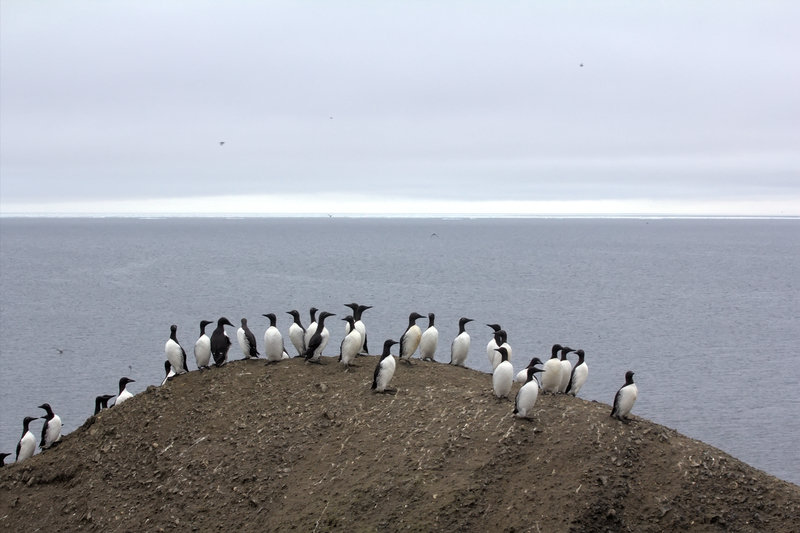Have you ever been to a harbour? Ever gone for a walk on a pier? If you have, then chances are you ran into this a lot...
Seabirds! These buddies are seagulls, but there are hundreds of different breeds of seabirds around the world. And where there are seabirds, there tends to be something else... poop.
It's not uncommon for the piers and rocks near the shore where seabirds nest and frolic to be covered in bird poop. For people in these areas, it's mostly a bit of a nuisance and something to avoid. And that's about as much as anyone thinks of it. But a new Canadian study of the Arctic—an area that is especially full of seabirds like thick-billed murres, or guillemots—suggests that this poop can actually be doing something very valuable.
It can be helping to keep the Arctic cooler.
How is that even possible?
Don't worry. We know what you're thinking. How does this even work? Are these birds pooping snow or something? (After all, a lot of bird poop is white...)
Rest assured, the scientists themselves were pretty blown away, too. But the truth is, this theory has nothing to do with the temperature or colour of seabird droppings. It's about what is in it—a chemical called ammonia.
Ammonia is actually something that is used in a lot of strong cleaning products (it's known for its harsh smell that, in large amounts, can cause your eyes to water and nose to get a burning sensation). Seabirds have a diet that is rich in nitrogen. As they digest their food, ammonia is created and then released in the animal's poop. And in areas such as this one—where thousands of seabirds can be found nesting—the rocks are literally covered in these white, ammonia-rich droppings. Have a gander for yourself...
So how does this affect the Arctic's temperature?
Cloud cover
According to Greg Wentworth, the Alberta-based scientist who is the lead author on this study, the ammonia helps create a "brighter umbrella" of clouds in the sky. When this ammonia is released into the atmosphere, it joins with other gases and particles to form droplets in the sky. These droplets create especially bright, reflective clouds. The more of these types of clouds that there are in the sky, the more sunlight that gets reflected back into space. And the more sunlight that is reflected away, the cooler the area becomes.
Wentworth is very careful to note that even tonnes of seabird poop aren't going to stop climate change. As he told the CBC, "it's a small cooling effect, but it's a significant one especially for a region that's experiencing such a rapid warming as the Arctic." Still, it's amazing to think of the ways that wildlife—even its body waste—can have a positive effect on an ecosystem.
 A flocks of guillemots rest on the shore of the Barents Sea, north of Norway and Russia. (© Max5128 | Dreamstime.com)
A flocks of guillemots rest on the shore of the Barents Sea, north of Norway and Russia. (© Max5128 | Dreamstime.com)










Weird 😕
It’s amazing how something’s else’s “waste” can help a different species in so many ways.